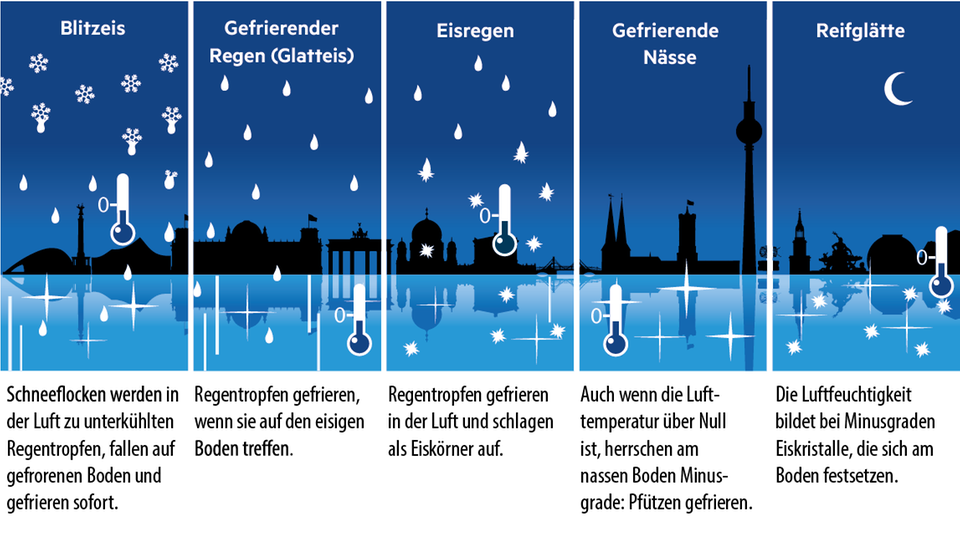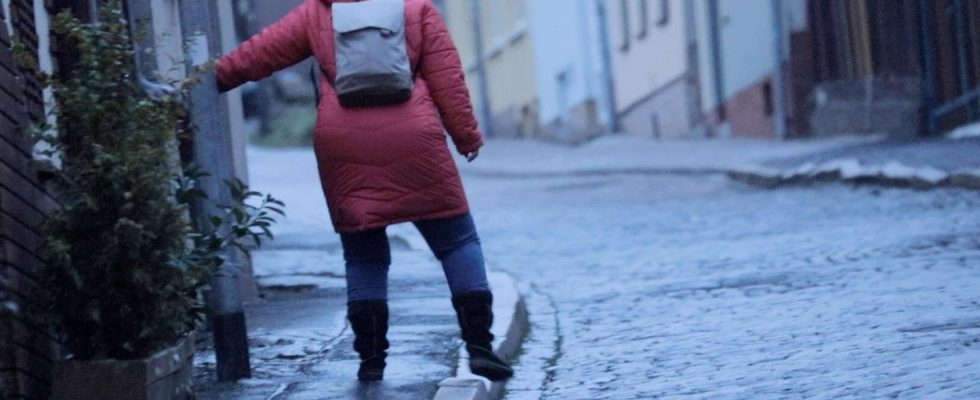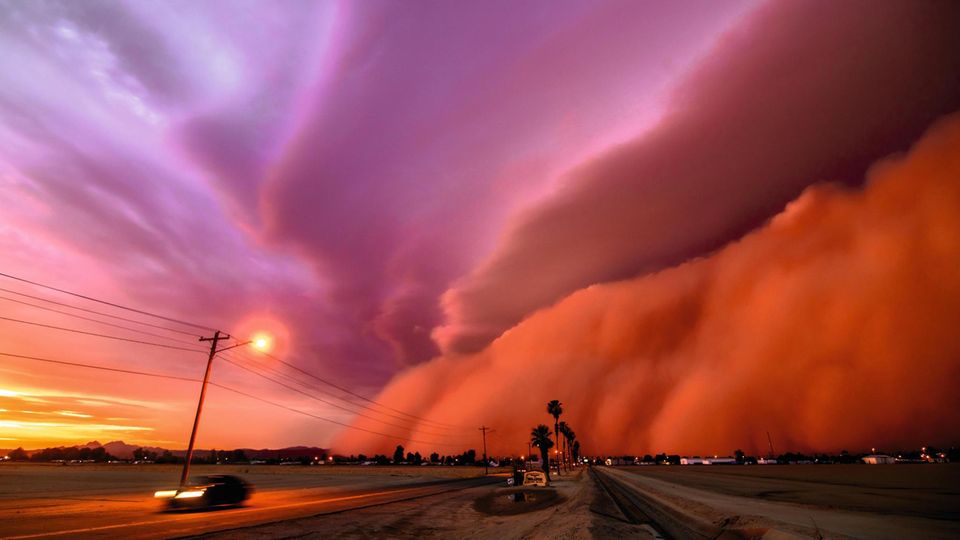Winter weather
Freezing rain and lightning ice: what’s behind it and why it’s so dangerous
Particular care is required in freezing rain and lightning ice. The picture shows an unclearly located photo from Germany from December 2022
© Imago Images
When temperatures are around freezing point, freezing rain and lightning are often warned. Read here what is behind the terms.
People who have to drive to work in particular fear the warning on frosty days Freezing rain and lightning ice. The result is slippery roads and an increased risk of accidents. Anyone traveling by bike or on foot also needs to be particularly careful.
But what exactly is freezing rain? According to the German Weather Service (DWD), freezing rain is, on the one hand, “supercooled rain that immediately freezes into ice when it hits solid objects and covers the objects with a layer of ice.” Something similar can be read on the “Wetter.de” portal. “It says: Freezing rain is a form of frozen rain that freezes immediately when it hits the earth.” If this freezing precipitation hits streets and sidewalks, they suddenly become slippery – this fact is also the background to the frequently used term “lightning ice”, which, according to the DWD, is not a meteorological term.

The infographic shows: This is how dangerous slippery conditions can arise. Further explanations can be found in the article
© dpa Infographic / Picture Alliance
Freezing rain and lightning ice increase the risk of accidents and injuries
Technical term or not: The name is pretty accurate. And it is precisely this immediate ice that poses a danger to drivers, cyclists and pedestrians. If they are surprised by freezing rain and lightning ice, there is a risk of falls and accidents. Vehicles slide uncontrollably on the road, feet slip away, physical rules seem to be suspended.
The ADAC even recommends taking a break in the event of lightning ice and waiting for the road service, as the tire grip is virtually zero (you can read more about this here). The bike should also be left standing and pedestrians should – if avoidable – not go outside until sidewalks have been gritted or the ice has melted. Otherwise there is an acute risk of injury.
Freezing rain can also occur when the precipitation freezes in the air and the drops form ice grains.
Black ice and slippery ice – the difference
The DWD also makes a distinction between the different types of smoothness.
Black ice is caused by frozen meltwater or puddles on roads and asphalt paths. Since rain doesn’t necessarily have to fall beforehand, ice can occur without any noticeable warning.
Black ice again is caused by the spontaneous freezing of rain described above. Black ice can also occur for a short time if raindrops are not supercooled but hit icy ground.
From Frosty smoothness Again, this occurs when morning frost on sidewalks and streets is compressed by shoes or tires and becomes a smooth surface through liquefaction and refreezing.
Slippery snow in turn, it is caused by a compressed layer of snow on roads and paths. As with frost, the surface briefly liquefies due to the pressure and then freezes again.
Sources:Weather.de, DWD
In the gallery: The pictures of the day explain small and large stories from all over the world


